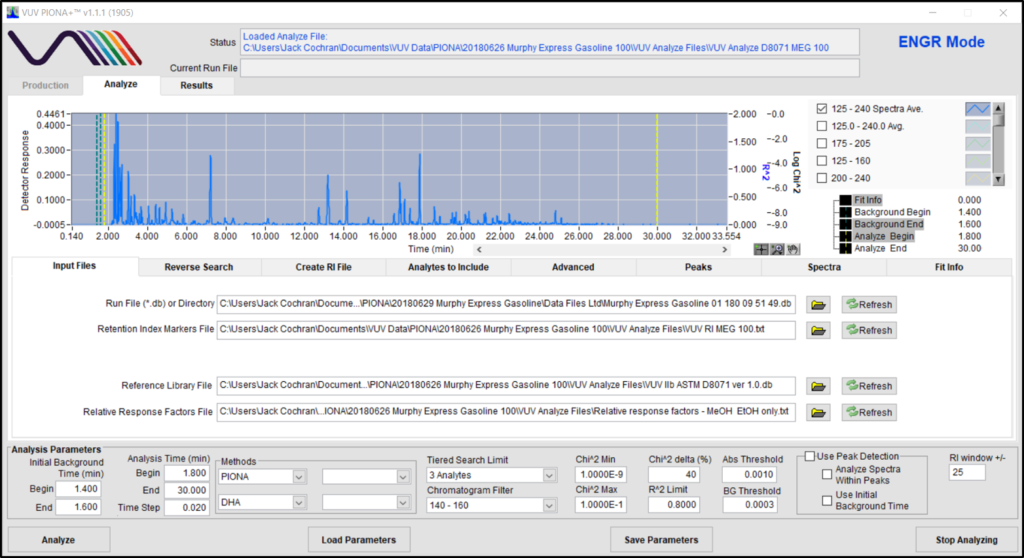Published Jack Cochran on July 5, 2018
ASTM D8071 for Gasoline Analysis
ASTM D8071 is the “Standard Test Method for Determination of Hydrocarbon Group Types and Select Hydrocarbon and Oxygenate Compounds in Automotive Spark-Ignition Engine Fuel Using Gas Chromatography with Vacuum Ultraviolet Absorption Spectroscopy Detection (GC-VUV)”. I use this method almost every day in my lab to analyze gasoline and gasoline-range samples, essentially for PIONA reporting. Its major features are short GC runtime (~ 33.5 min), absorbance spectra confirmation and deconvolution, and accurate mass % quantification, quickly, with VUV Analyze™ hands-off data processing. As we get ready to sponsor an interlaboratory study on ASTM D8071, I wanted to (again) check the repeatability of our local system, especially for a large sample queue.
My experiment involved 100 replicate local gasoline samples, the maximum the Agilent 7683 autosampler tray will hold, analyzed back-to-back under ASTM D8071 conditions. Figure 1 is a GC-VUV chromatogram showing the gasoline with some of the compounds identified for reference. The real workhorse though is VUV Analyze™ PIONA+, the powerful data processing engine that delivers PIONA values at the push of a button (Figure 2). The results? Well, check them out in Table 1, as Average Mass % and RSD % for a select number of the analyzed samples. The upper part of the table down to the methylnaphthalenes shows the Categories reported for D8071. The RSD % values for those are less than 3% in every case, and lower in most cases, even when the Mass % values are less than 0.5 (e.g., benzene, naphthalene, methylnaphthalenes).
The lower part of Table 1 is included to indicate repeatability for more volatile compounds, including gases like butane and isobutane. These can be lost from the vial during their time on the autosampler, but the RSD % values are quite reasonable given the 67-hour lifetime of the experiment. While 67 hours may sound like a long time, 100 samples were analyzed during that period! The data processing time via VUV Analyze™? Approximately 60 sec per sample, or about 100 min for the entire queue. No data processing review time included, because there is no data processing review necessary. Join the club.

Figure 1. GC-VUV chromatogram of a gasoline analyzed according to ASTM D8071. Although there are many coelutions, accurate quantification is done by taking advantage of unique and class-specific absorbance spectra.

Figure 2. VUV Analyze PIONA+ offers push-button data processing of gasoline samples analyzed using ASTM D8071. A full report for each sample is generated in less than 60 sec.

Table 1. Average mass % (Avg M %) for some of the Categories determined using ASTM D8071 after analysis of 100 replicate gasoline samples in one queue. Sample results 1-5, 10, 15, 20, 25, 30, 35, 40, 45, 50, 55, 65, 70, 75, 80, 85, 90, 95, and 100 were used to calculate the average mass % and relative standard deviation % (RSD %).










R&D Work